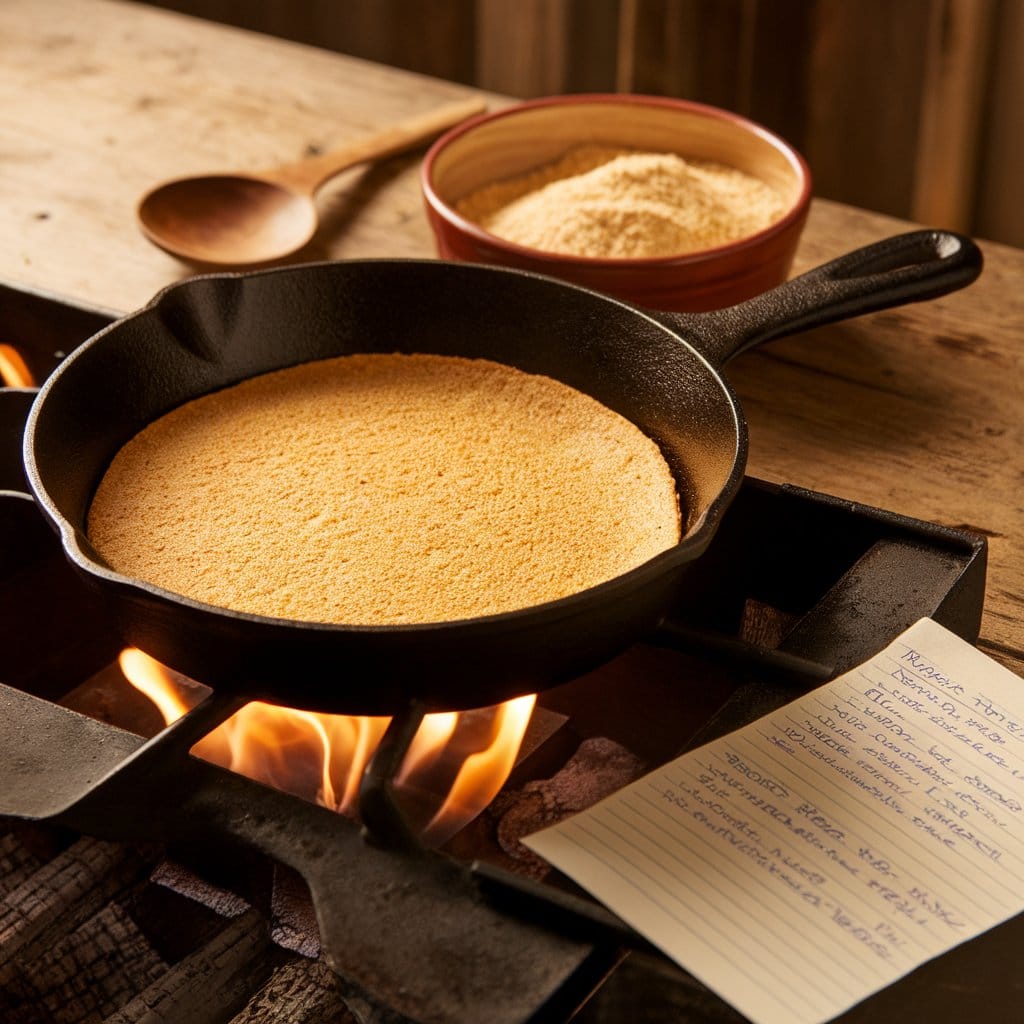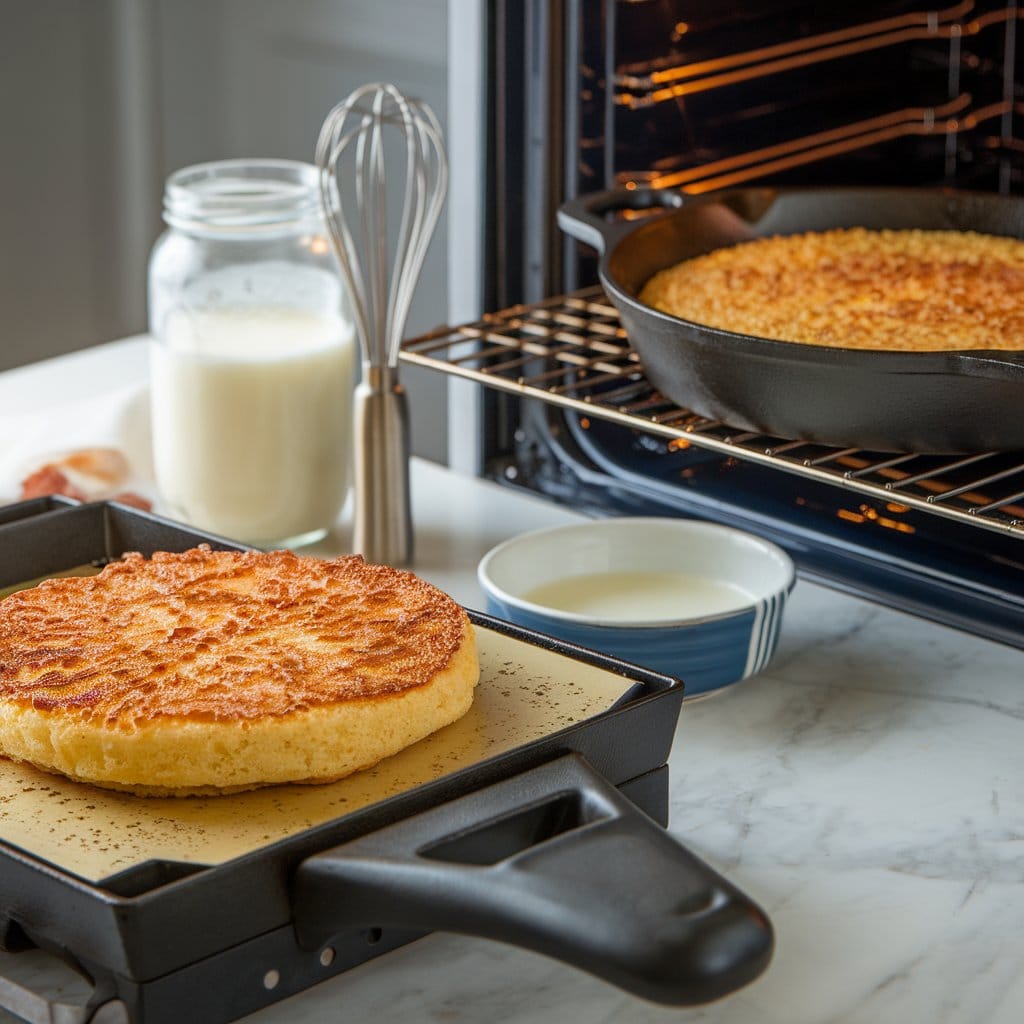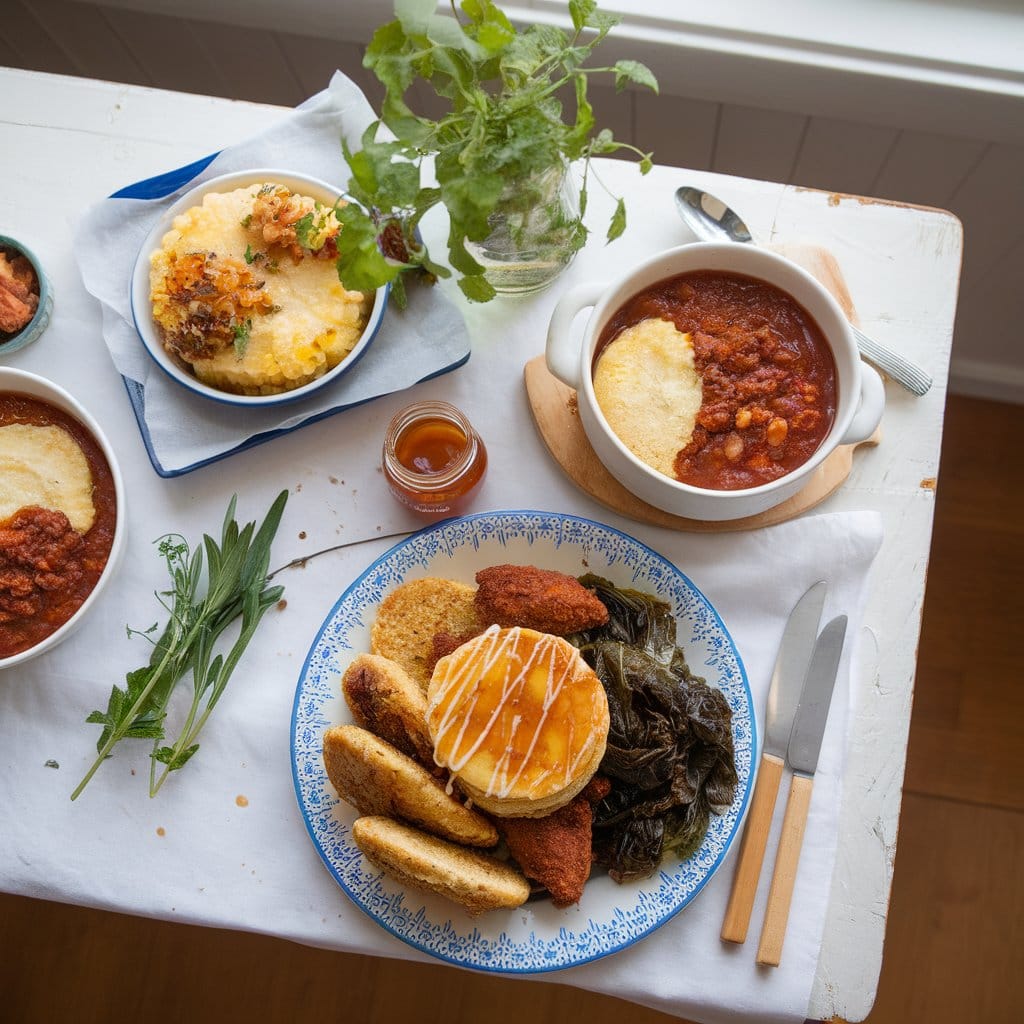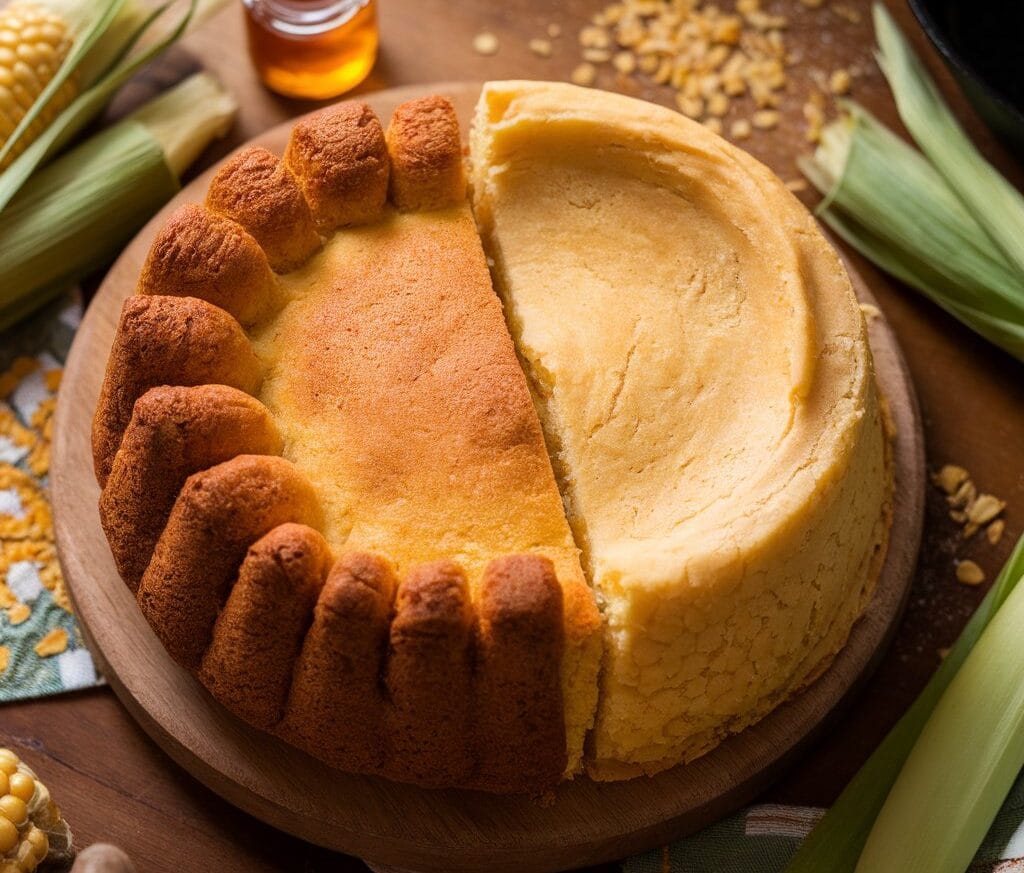The Difference Between Corn Pone and Hoe Cake
Have you ever wondered about the difference between corn pone and hoe cake? You’re not alone! These iconic Southern staples may share similar ingredients, but they differ in texture, flavor, and preparation. Corn pone is dense and hearty, making it a perfect side for savory dishes. Hoe cake, on the other hand, is crispy and versatile—great for breakfast, snacks, or as a tasty side.
Both recipes are easy to make with just a few basic pantry ingredients. Their versatility means you can enjoy them in many ways. Plus, their rich history ties them to the traditions of Southern cooking. Picture biting into the rustic charm of corn pone or savoring the crispy edges of a hoe cake—it’s like stepping back in time. Curious to learn what makes these dishes so unique? Keep reading to explore their history, how they’re made, and delicious ways to enjoy them!
Understanding the Origins of Corn Pone and Hoe Cake

Historical Background of Corn Pone
Corn pone has deep roots in Southern culinary tradition, stemming from its practical origins as a simple, nourishing dish. Early settlers and Native Americans relied on cornmeal as a staple ingredient, and corn pone became a go-to recipe for its ease of preparation. With just cornmeal, water, and salt, it required minimal resources and could be cooked over an open hearth or in a cast iron skillet.
Traditionally, corn pone was baked directly on hot coals or in the embers of a fire, giving it a firm, dense texture. Its simplicity made it a reliable companion to stews, soups, and roasted meats. Over time, its role in Southern cuisine evolved, but its rustic charm remains. Corn pone is more than just a dish; it’s a testament to the resourcefulness of early cooks and a celebration of straightforward flavors.
How Hoe Cake Became a Southern Favorite
Hoe cakes, unlike corn pone, earned their name from their original cooking method—on the flat surface of a hoe over an open flame. This method made them a convenient option for field workers who needed a quick and satisfying meal. The batter, made from cornmeal, water, and often enriched with bacon grease, was poured onto the heated hoe and fried to crispy perfection.
Over time, hoe cakes became a beloved staple in Southern kitchens, celebrated for their versatility and flavor. Their thinner, crispier texture, achieved through frying, sets them apart from the dense nature of corn pone. Today, hoe cakes are enjoyed as a side dish, breakfast item, or even a snack, often served with butter, syrup, or savory toppings like greens or fried chicken.
Ingredients That Highlight the Contrast
Key Ingredients in Corn Pone Recipes
Corn pone’s beauty lies in its simplicity. The traditional recipe calls for just three ingredients: cornmeal, water, and salt. This minimalist approach creates a dense, earthy flavor that pairs well with hearty, savory dishes. Corn pone avoids added fats like bacon grease, which gives it a more rustic and natural taste.
This straightforward ingredient list reflects its historical roots, as it was designed to be a filling and practical dish for early settlers. The absence of leavening agents or additional ingredients also gives corn pone its dense, firm texture, making it a perfect accompaniment to rich stews or roasted meats.
Unique Additions to Hoe Cake Batter
Hoe cakes, by contrast, embrace flavor-enhancing ingredients that elevate their taste and texture. While the base is still cornmeal, additions like bacon grease, buttermilk, or eggs are often included. These ingredients create a lighter, crispier batter that fries beautifully on a hot skillet.
The bacon grease adds a rich, savory flavor, while buttermilk provides a slight tang and helps create the golden, crispy edges that hoe cakes are famous for. These enhancements make hoe cakes more versatile, allowing them to pair well with both sweet and savory toppings. Whether served with syrup for breakfast or as a side for fried chicken, hoe cakes deliver a flavor-packed experience.
Cooking Styles That Define Corn Pone and Hoe Cake

Traditional Techniques for Corn Pone Preparation
Corn pone is traditionally baked, either in a cast iron skillet or directly on hot coals. The batter, thick and sturdy, is shaped by hand before being placed in the cooking vessel. This method results in a dense, firm texture that holds up well to hearty meals.
The slow baking process allows the natural flavors of the cornmeal to shine, creating a dish that is both rustic and satisfying. This traditional preparation method underscores the difference between corn pone and hoe cake. While corn pone is baked and hearty, hoe cake relies on frying for its distinctive texture and flavor.
How Hoe Cake is Cooked to Perfection
Hoe cakes are cooked on a hot skillet or griddle, often greased with bacon fat for added flavor. The batter is poured thinly onto the surface and fried until golden brown on each side. This technique creates the signature crispy edges and light texture that hoe cakes are known for.
The frying process gives hoe cakes a unique crunch and a slightly nutty flavor from the cornmeal. This preparation method also makes hoe cakes incredibly versatile, as they can be cooked quickly and served hot off the skillet. The difference between corn pone and hoe cake becomes evident in their cooking styles—hoe cakes are light and crispy, while corn pone is dense and baked.
Exploring the Texture and Flavor of Corn Pone and Hoe Cake
The Dense and Hearty Taste of Corn Pone
Corn pone offers a firm, hearty texture that is both filling and satisfying. Its dense consistency comes from its minimal ingredient list, allowing the natural flavor of cornmeal to take center stage. This rustic quality makes it an ideal companion to rich, savory dishes like stews, chili, or roasted meats.
The texture of corn pone is its defining characteristic. It’s not fluffy or crispy like hoe cakes; instead, it delivers a sturdy bite that holds up well to sauces and gravies. This hearty appeal makes corn pone a favorite among those who appreciate simple, unpretentious comfort food.
The Crispy and Versatile Appeal of Hoe Cake
Hoe cakes, in contrast, are celebrated for their light and crispy texture. The addition of bacon grease or buttermilk enhances their flavor, creating a rich, slightly nutty taste. The thin batter, fried to golden perfection, gives hoe cakes their characteristic crunch.
This versatility makes hoe cakes a beloved option for any meal. They can be enjoyed with sweet toppings like honey or syrup for breakfast or paired with savory dishes like fried chicken or collard greens for dinner. The difference between corn pone and hoe cake is clear in their textures and flavors—corn pone is dense and hearty, while hoe cakes are crisp and adaptable.
Popular Pairings and Uses for Corn Pone and Hoe Cake

Corn Pone as a Side Dish or Standalone Snack
Corn pone shines as a side dish, complementing hearty meals like stews, soups, or roast meats. Its dense texture makes it excellent for soaking up flavorful juices, enhancing the overall meal experience.
Corn pone’s simplicity also makes it a satisfying standalone snack. Its rustic, filling nature appeals to those who enjoy traditional Southern comfort food. Whether served with butter or eaten plain, corn pone delivers a taste of history and home.
Creative Ways to Serve Hoe Cake
Hoe cakes are incredibly versatile and can be served in countless ways. For breakfast, they pair beautifully with butter, honey, or syrup. As a side dish, they’re an excellent match for savory dishes like fried chicken, greens, or even barbecue.
Their adaptability makes hoe cakes a favorite for any occasion. They can be sweetened with toppings like jam or powdered sugar or kept savory with additions like cheese or herbs. This versatility sets hoe cakes apart and makes them a staple in Southern kitchens.
Frequently Asked Questions (FAQs)
What is the difference between corn pone and hoe cake?
The difference between corn pone and hoe cake lies in their ingredients, texture, and preparation. Corn pone uses a thick batter made from just cornmeal, water, and salt, resulting in a dense, hearty texture. Hoe cakes, by contrast, include added fats like bacon grease or buttermilk, creating a thinner batter that is fried on a skillet. The result is crispy edges and a lighter, crunchier bite. Both are iconic Southern dishes, but their unique characteristics set them apart.
What is the difference between a hoecake and a pancake?
While hoecakes and pancakes may look similar, they differ greatly in ingredients and flavor. Hoecakes are made with cornmeal, giving them a denser texture and a nutty, savory taste. Pancakes, on the other hand, are made with flour and leavening agents, resulting in a fluffy, sweet consistency. Hoecakes are fried in bacon grease, creating crispy edges, while pancakes are cooked in butter for a soft finish. The difference between a hoecake and a pancake comes down to their ingredients and purpose—hoecakes are savory, while pancakes are sweet.
What is a hoecake?
A hoecake is a traditional Southern dish made from a simple cornmeal batter. Historically cooked on a hoe over an open flame, hoecakes are now typically fried on a skillet. The batter, often enriched with bacon grease or buttermilk, creates a crispy, golden cake with a nutty flavor. Hoecakes are versatile and can be served with savory dishes like greens or enjoyed with sweet toppings like syrup or honey. Their crispy texture and rustic charm make them a beloved part of Southern cooking.
What is the difference between hot water cornbread and hoe cakes?
The difference between hot water cornbread and hoe cakes lies in their preparation and texture. Hot water cornbread uses boiling water to mix with cornmeal, creating a thick dough that is shaped by hand and fried. This results in a dense, hearty texture. Hoe cakes, on the other hand, use a thinner batter that is fried on a skillet, creating crispy edges and a lighter consistency. Both are delicious, but their unique techniques set them apart.
Bringing It All Together: Celebrating Corn Pone and Hoe Cake
Now that we’ve explored the difference between corn pone and hoe cake, it’s clear that both dishes offer unique flavors, textures, and histories. Corn pone, with its dense, hearty texture, is perfect for pairing with savory meals or enjoying as a standalone snack. Hoe cakes, with their crispy edges and versatile flavor, shine in both sweet and savory applications.
First, their ingredients and preparation methods highlight their individuality. Next, their textures and flavors cater to different tastes, ensuring there’s something for everyone. Finally, their roots in Southern cuisine make them a delicious reminder of tradition and history.
Whether you crave the rustic appeal of corn pone or the light crispiness of hoe cake, both dishes bring comfort and satisfaction to the table. Why not try making each and discover your favorite? Embrace the flavors, enjoy the journey, and celebrate these timeless Southern staples in your own kitchen!
Recipe for Hoe Cakes: Southern Comfort in Every Bite
Kodiak Cakes Pancake Recipe: Easy, Delicious, and Healthy
1920’s Recipe for Chocolate Cake: A Timeless Classic
Chicken Casserole Recipe: Easy, Flavorful, and Perfect for Any Meal

